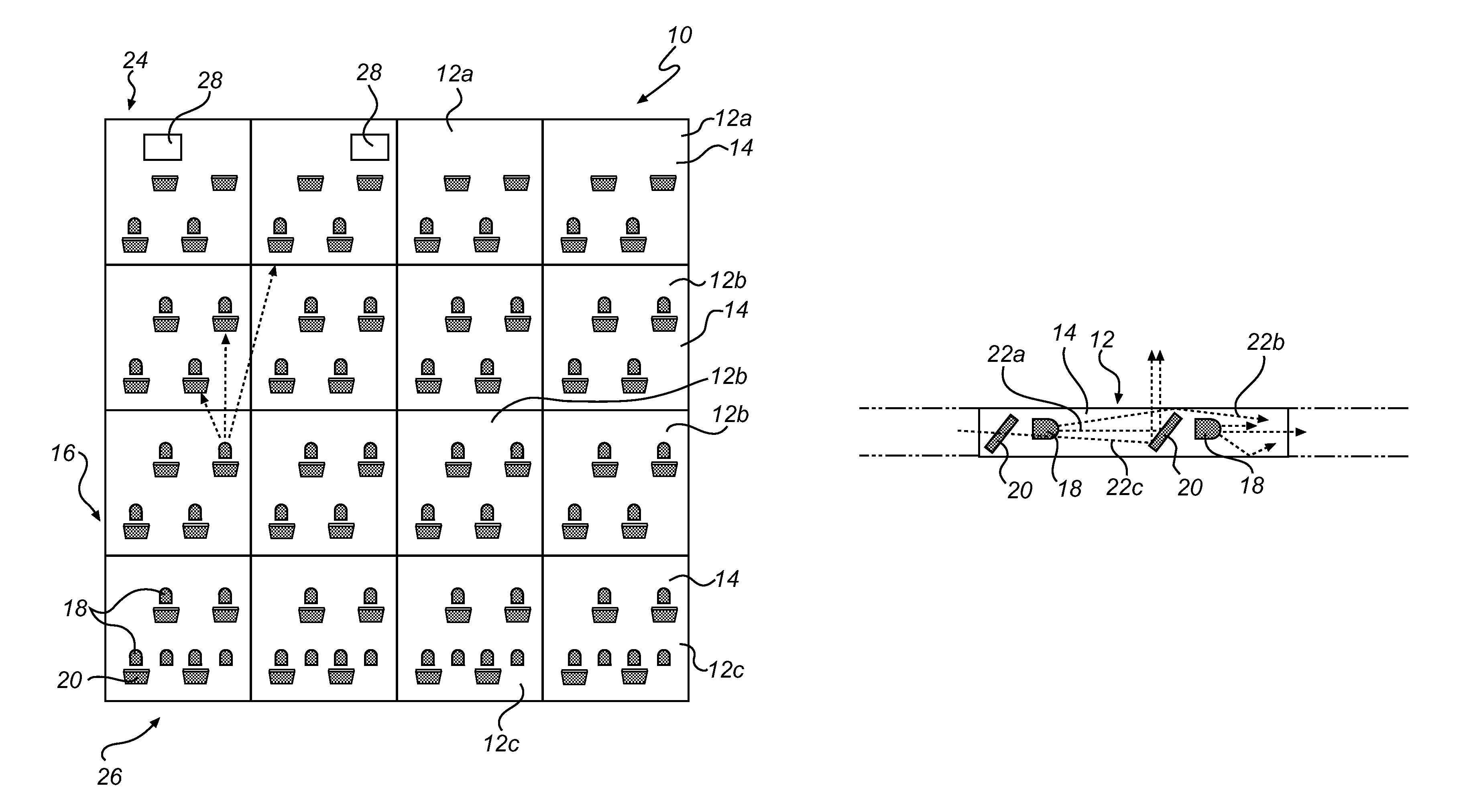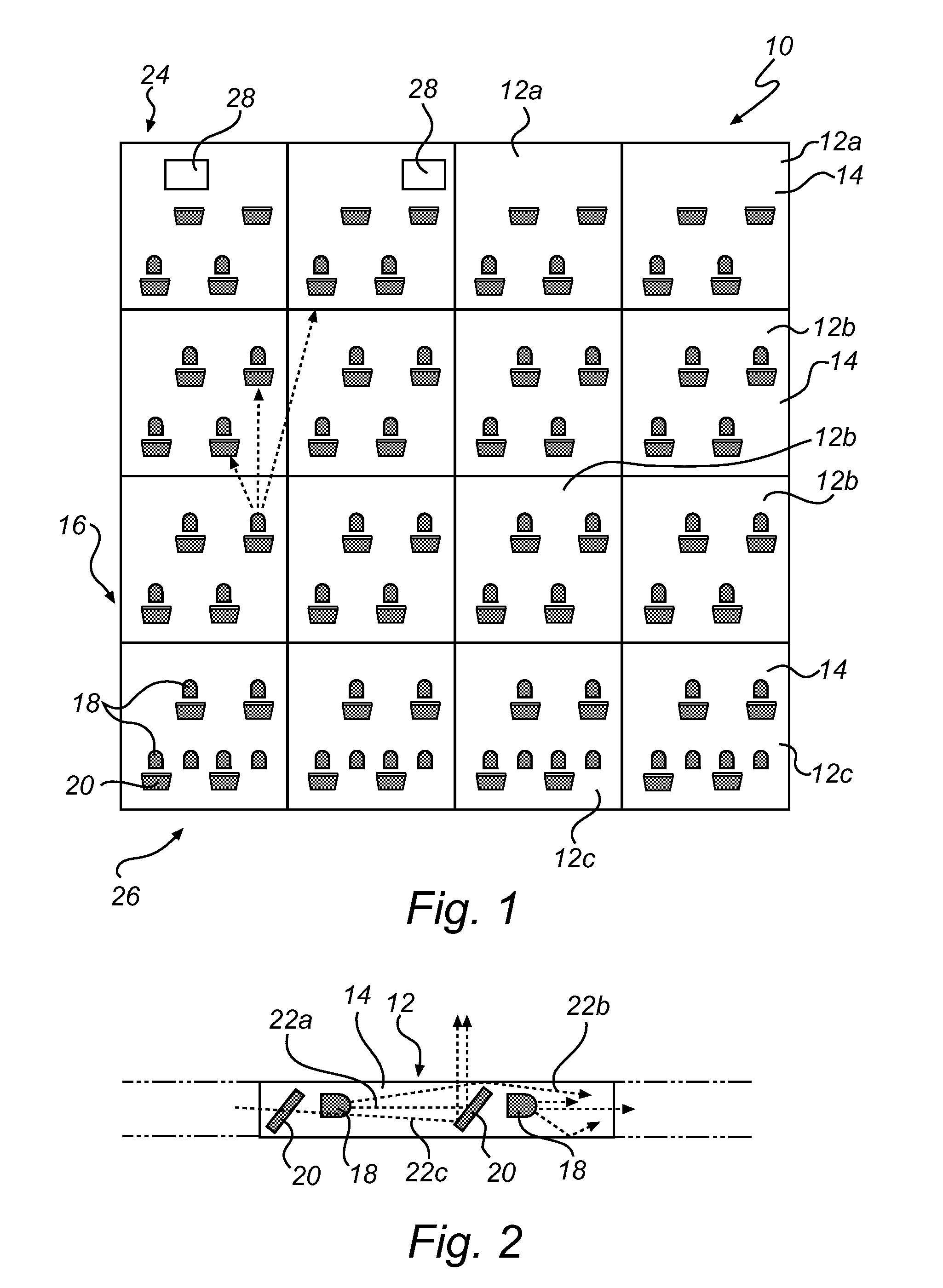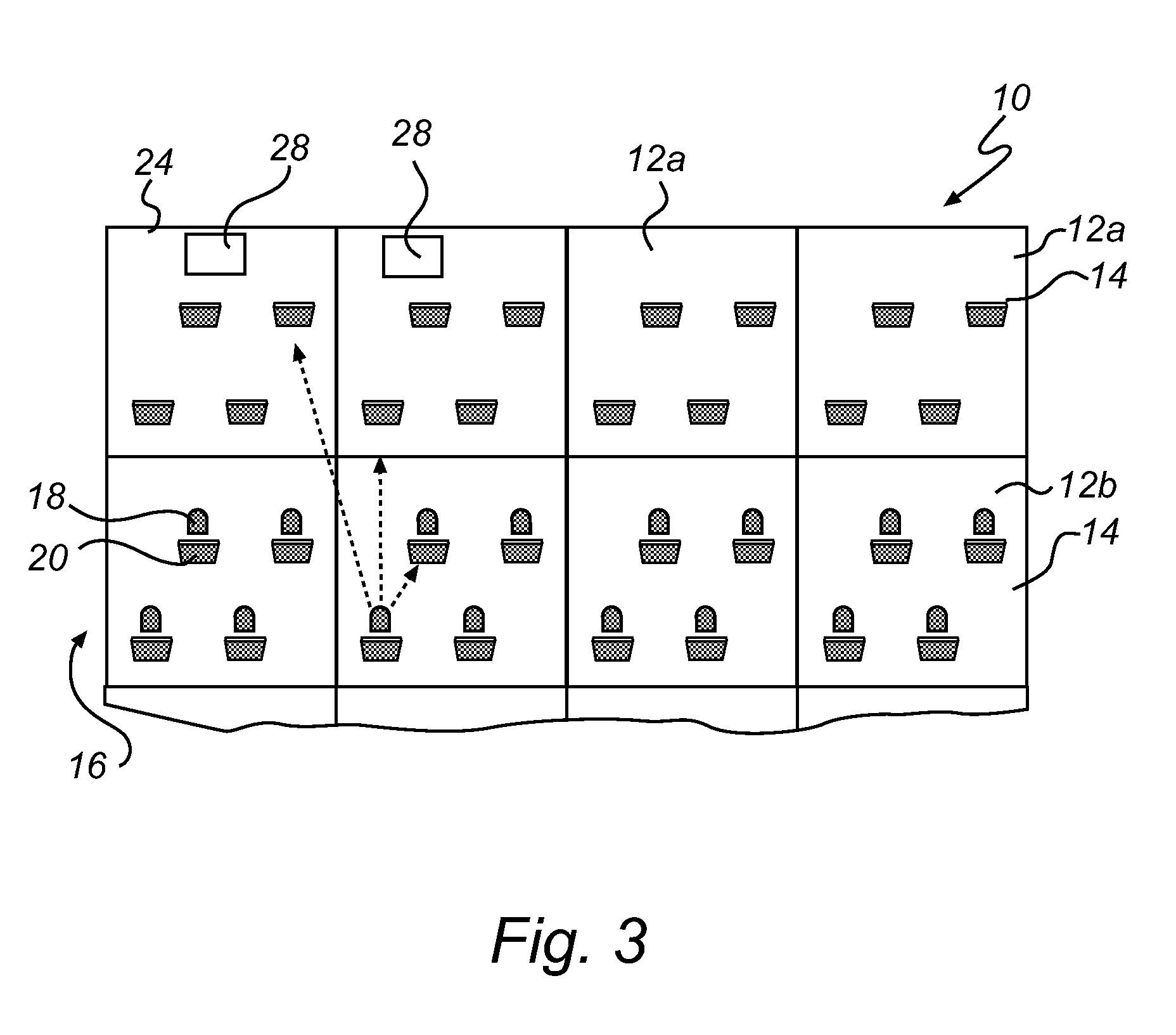Tiled lighting device
a lighting device and tile technology, applied in lighting support devices, lighting and heating apparatus, instruments, etc., can solve the problems of glare or bright spots or other loss, excessive and shortage of light in the end tile at the opposite side of the light guid
- Summary
- Abstract
- Description
- Claims
- Application Information
AI Technical Summary
Benefits of technology
Problems solved by technology
Method used
Image
Examples
Embodiment Construction
[0021]FIG. 1 illustrates a tiled lighting device 10 according to the invention. The lighting tiled device 10 is build up of a plurality of modules or tiles generally designated 12. Depending on the number and size of tiles 12 and how they are arranged, the lighting device 10 may have virtually any size and shape, making it more versatile than a common luminary having a fixed size and shape. For instance, the lighting device 10 may be customized to cover a certain area or to fit in a certain space. In FIG. 1, the exemplary tiled lighting device 10 is made up of 4×4 tiles 12, all having essentially the same size and shape.
[0022]Each tile 12 in the lighting device 10 of FIG. 1 comprises a square, transparent or translucent sub-light guide plate 14. Other forms may be used, such as rectangular tiles, and the not all tiles in the lighting device have to be of the same shape and size. The transparent or translucent sub-light guide plate 14 may be made of glass or plastics.
[0023]The tiles ...
PUM
 Login to View More
Login to View More Abstract
Description
Claims
Application Information
 Login to View More
Login to View More - R&D
- Intellectual Property
- Life Sciences
- Materials
- Tech Scout
- Unparalleled Data Quality
- Higher Quality Content
- 60% Fewer Hallucinations
Browse by: Latest US Patents, China's latest patents, Technical Efficacy Thesaurus, Application Domain, Technology Topic, Popular Technical Reports.
© 2025 PatSnap. All rights reserved.Legal|Privacy policy|Modern Slavery Act Transparency Statement|Sitemap|About US| Contact US: help@patsnap.com



